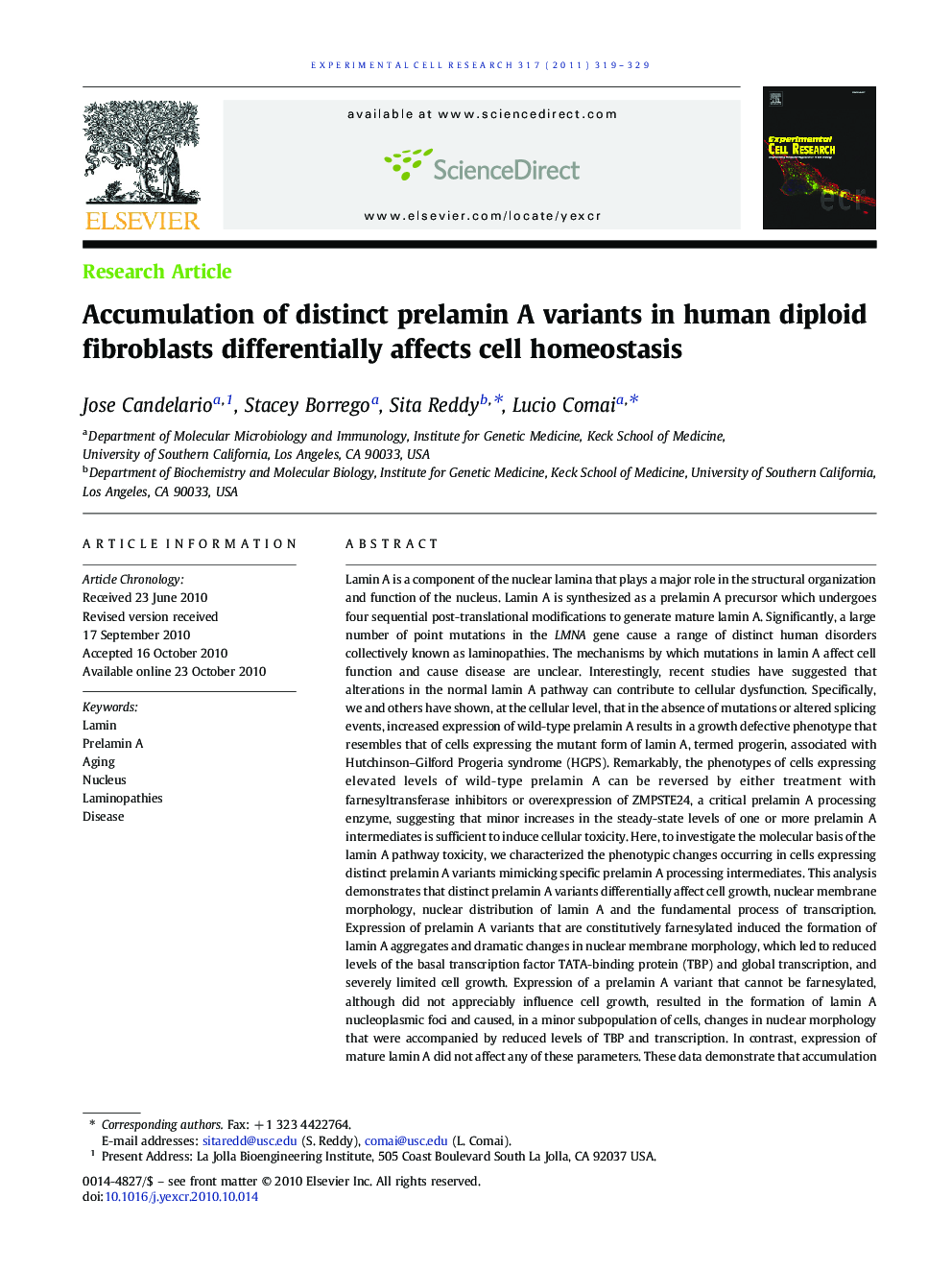| Article ID | Journal | Published Year | Pages | File Type |
|---|---|---|---|---|
| 10904677 | Experimental Cell Research | 2011 | 11 Pages |
Abstract
Lamin A is a component of the nuclear lamina that plays a major role in the structural organization and function of the nucleus. Lamin A is synthesized as a prelamin A precursor which undergoes four sequential post-translational modifications to generate mature lamin A. Significantly, a large number of point mutations in the LMNA gene cause a range of distinct human disorders collectively known as laminopathies. The mechanisms by which mutations in lamin A affect cell function and cause disease are unclear. Interestingly, recent studies have suggested that alterations in the normal lamin A pathway can contribute to cellular dysfunction. Specifically, we and others have shown, at the cellular level, that in the absence of mutations or altered splicing events, increased expression of wild-type prelamin A results in a growth defective phenotype that resembles that of cells expressing the mutant form of lamin A, termed progerin, associated with Hutchinson-Gilford Progeria syndrome (HGPS). Remarkably, the phenotypes of cells expressing elevated levels of wild-type prelamin A can be reversed by either treatment with farnesyltransferase inhibitors or overexpression of ZMPSTE24, a critical prelamin A processing enzyme, suggesting that minor increases in the steady-state levels of one or more prelamin A intermediates is sufficient to induce cellular toxicity. Here, to investigate the molecular basis of the lamin A pathway toxicity, we characterized the phenotypic changes occurring in cells expressing distinct prelamin A variants mimicking specific prelamin A processing intermediates. This analysis demonstrates that distinct prelamin A variants differentially affect cell growth, nuclear membrane morphology, nuclear distribution of lamin A and the fundamental process of transcription. Expression of prelamin A variants that are constitutively farnesylated induced the formation of lamin A aggregates and dramatic changes in nuclear membrane morphology, which led to reduced levels of the basal transcription factor TATA-binding protein (TBP) and global transcription, and severely limited cell growth. Expression of a prelamin A variant that cannot be farnesylated, although did not appreciably influence cell growth, resulted in the formation of lamin A nucleoplasmic foci and caused, in a minor subpopulation of cells, changes in nuclear morphology that were accompanied by reduced levels of TBP and transcription. In contrast, expression of mature lamin A did not affect any of these parameters. These data demonstrate that accumulation of any partially processed prelamin A protein alters cellular homeostasis to some degree, even though the most dramatic effects are caused by variants with a permanently farnesylated carboxyl-terminal tail.
Related Topics
Life Sciences
Biochemistry, Genetics and Molecular Biology
Cancer Research
Authors
Jose Candelario, Stacey Borrego, Sita Reddy, Lucio Comai,
